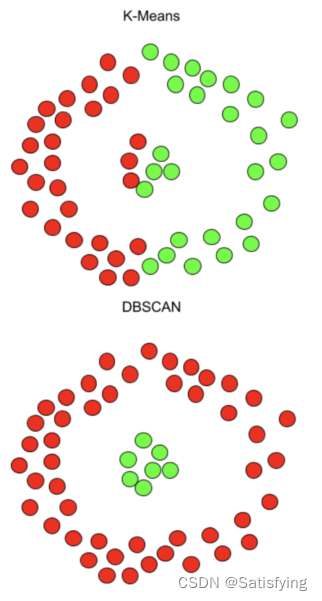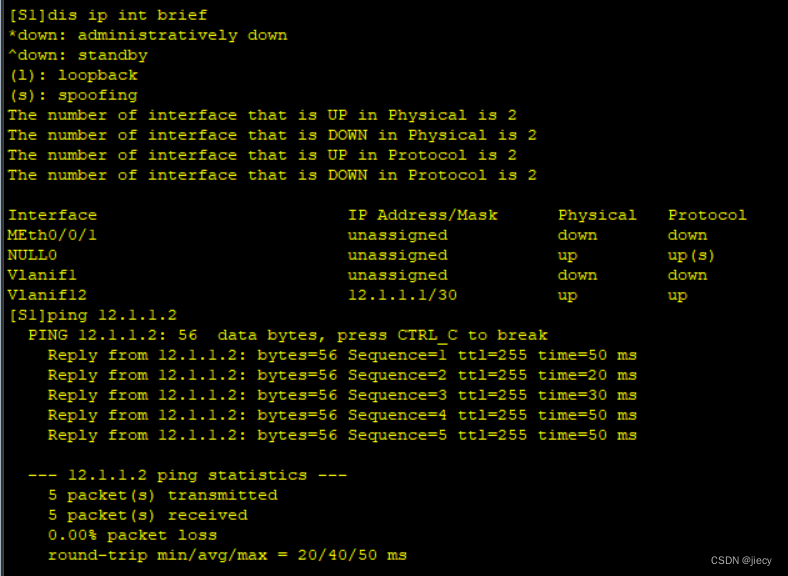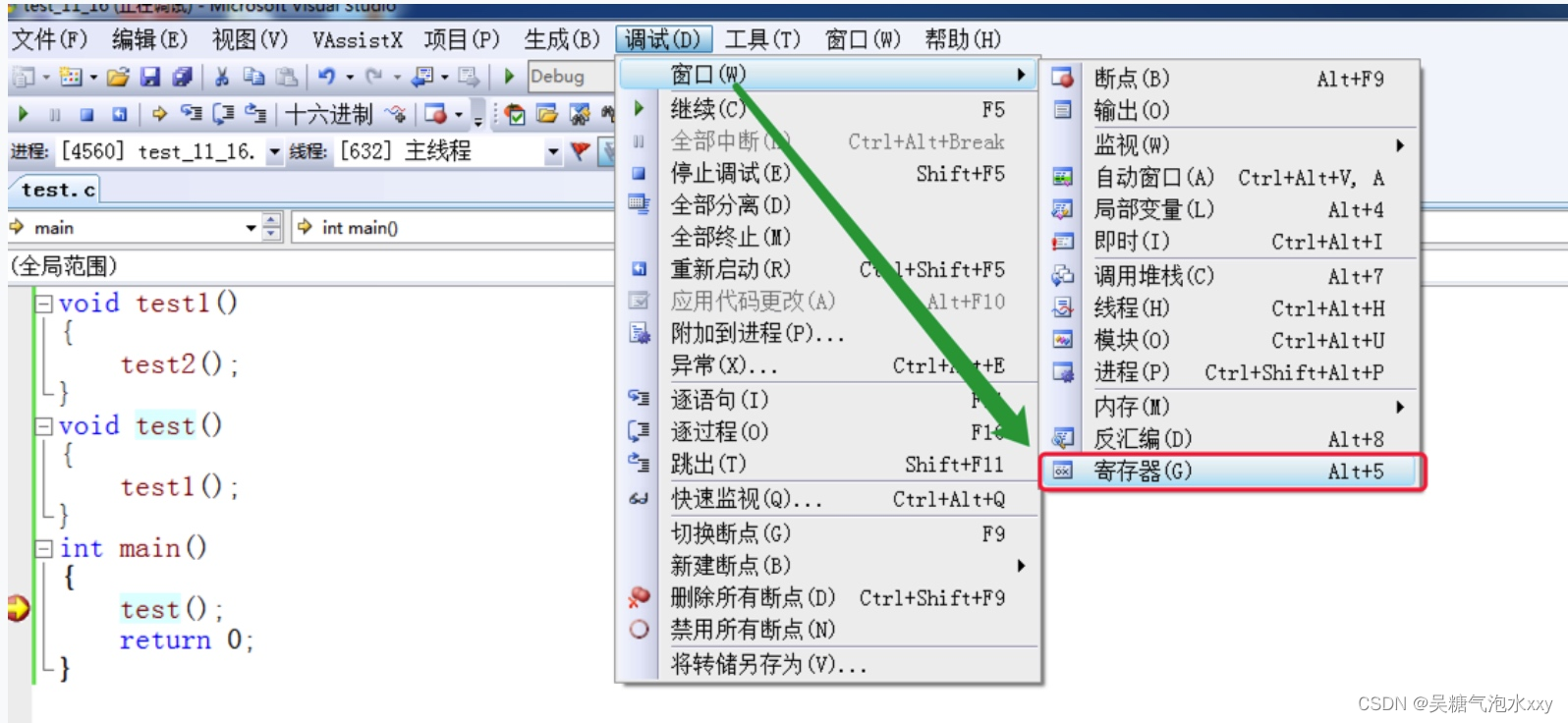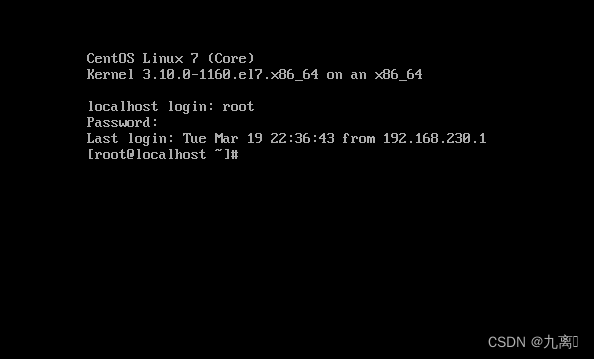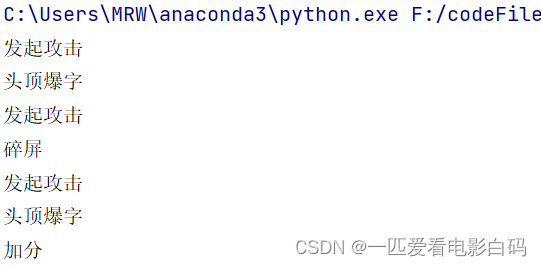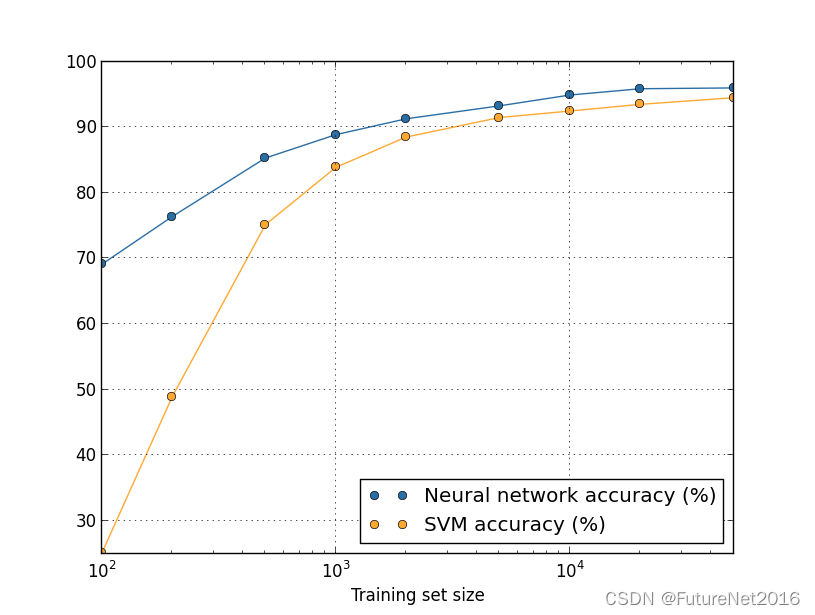目录
- 4 源码分析
- 4.1 配置指令源码分析
- 4.1.1 limit_conn_zone
- 4.1.2 limit_conn
- 4.1.3 limit_conn_log_level
- 4.1.4 limit_conn_status
- 4.1.5 limit_conn_dry_run
- 4.2 共享内存初始化
- 4.3 模块初始化
- 4.4 请求处理
- 4.5 红黑树的查找
- 4.6 请求关闭的析构函数
关注我的微信公众号:

上接 深入理解nginx连接数限制模块
4 源码分析
ngx_http_limit_con_module模块和ngx_http_limit_req_module的实现原理是很象的,甚至包括配置参数也几乎一致,但是相比于后者,本模块实现起来更简单,因为它不需要漏桶算法,只要统计某个key对应的连接数,如果超过限定的值就拒绝请求即可。下面先从配置指令开始分析。关于ngx_http_limit_req_module的实现原理可以查看深入理解nginx的请求限速模块。
4.1 配置指令源码分析
4.1.1 limit_conn_zone
{ ngx_string("limit_conn_zone"),
NGX_HTTP_MAIN_CONF|NGX_CONF_TAKE2,
ngx_http_limit_conn_zone,
0,
0,
NULL },
本模块通过以上代码在nginx配置文件的http块中定义了一个limit_conn_zone的配置指令,由ngx_http_limit_conn_zone解析函数进行解析。
ngx_http_limit_conn_zone的实现代码就是分析配置指令,解析出用于连接限速的查询key(动态变量),并且根据配置的zone信息来创建一个共享内存缓冲区,创建的贡共享内存缓冲区用来存储key值对应的连接数的统计值。
static char *
ngx_http_limit_conn_zone(ngx_conf_t *cf, ngx_command_t *cmd, void *conf)
{
u_char *p;
ssize_t size;
ngx_str_t *value, name, s;
ngx_uint_t i;
ngx_shm_zone_t *shm_zone;
ngx_http_limit_conn_ctx_t *ctx;
ngx_http_compile_complex_value_t ccv;
value = cf->args->elts;
/* 创建配置上下文 */
ctx = ngx_pcalloc(cf->pool, sizeof(ngx_http_limit_conn_ctx_t));
if (ctx == NULL) {
return NGX_CONF_ERROR;
}
ngx_memzero(&ccv, sizeof(ngx_http_compile_complex_value_t));
ccv.cf = cf;
ccv.value = &value[1];
ccv.complex_value = &ctx->key;
if (ngx_http_compile_complex_value(&ccv) != NGX_OK) {
return NGX_CONF_ERROR;
}
......
/* 解析共享内存zone的配置 */
/* 创建一个共享内存缓冲区 */
shm_zone = ngx_shared_memory_add(cf, &name, size,
&ngx_http_limit_conn_module);
if (shm_zone == NULL) {
return NGX_CONF_ERROR;
}
if (shm_zone->data) {
ctx = shm_zone->data;
ngx_conf_log_error(NGX_LOG_EMERG, cf, 0,
"%V \"%V\" is already bound to key \"%V\"",
&cmd->name, &name, &ctx->key.value);
return NGX_CONF_ERROR;
}
shm_zone->init = ngx_http_limit_conn_init_zone;
shm_zone->data = ctx;
return NGX_CONF_OK;
}
4.1.2 limit_conn
{ ngx_string("limit_conn"),
NGX_HTTP_MAIN_CONF|NGX_HTTP_SRV_CONF|NGX_HTTP_LOC_CONF|NGX_CONF_TAKE2,
ngx_http_limit_conn,
NGX_HTTP_LOC_CONF_OFFSET,
0,
NULL },
本模块通过以上代码在nginx配置文件的http/server/location块中定义了一个limit_conn的配置指令,由ngx_http_limit_conn解析函数进行解析。通过定义这个指令,最终在location级别开启连接数限制功能。
本模块和ngx_http_limit_req_module一样,也允许配置多个limit_conn指令,这样子本模块在请求进来的时候,会依次遍历所有的限制规则进行连接数限制处理。
以下是实现源码,里面进行了详细的注释:
static char *
ngx_http_limit_conn(ngx_conf_t *cf, ngx_command_t *cmd, void *conf)
{
ngx_shm_zone_t *shm_zone;
ngx_http_limit_conn_conf_t *lccf = conf;
ngx_http_limit_conn_limit_t *limit, *limits;
ngx_str_t *value;
ngx_int_t n;
ngx_uint_t i;
value = cf->args->elts;
/* 在ngx_http_limit_conn_zone里面已经添加了, 这里获取共享内存区对象 */
shm_zone = ngx_shared_memory_add(cf, &value[1], 0,
&ngx_http_limit_conn_module);
if (shm_zone == NULL) {
return NGX_CONF_ERROR;
}
/* 获取连接数限制规则数组,如果没有创建则重建一个新的 */
limits = lccf->limits.elts;
if (limits == NULL) {
if (ngx_array_init(&lccf->limits, cf->pool, 1,
sizeof(ngx_http_limit_conn_limit_t))
!= NGX_OK)
{
return NGX_CONF_ERROR;
}
}
/* 如果当前配置的规则的zone之前的规则已经用过了,则报配置重复错误 */
for (i = 0; i < lccf->limits.nelts; i++) {
if (shm_zone == limits[i].shm_zone) {
return "is duplicate";
}
}
/* 分析连接限制的数量,最大是65535 */
n = ngx_atoi(value[2].data, value[2].len);
if (n <= 0) {
ngx_conf_log_error(NGX_LOG_EMERG, cf, 0,
"invalid number of connections \"%V\"", &value[2]);
return NGX_CONF_ERROR;
}
if (n > 65535) {
ngx_conf_log_error(NGX_LOG_EMERG, cf, 0,
"connection limit must be less 65536");
return NGX_CONF_ERROR;
}
/* 将限制规则添加到规则数组中 */
limit = ngx_array_push(&lccf->limits);
if (limit == NULL) {
return NGX_CONF_ERROR;
}
limit->conn = n;
limit->shm_zone = shm_zone;
return NGX_CONF_OK;
}
4.1.3 limit_conn_log_level
{ ngx_string("limit_conn_log_level"),
NGX_HTTP_MAIN_CONF|NGX_HTTP_SRV_CONF|NGX_HTTP_LOC_CONF|NGX_CONF_TAKE1,
ngx_conf_set_enum_slot,
NGX_HTTP_LOC_CONF_OFFSET,
offsetof(ngx_http_limit_conn_conf_t, log_level),
&ngx_http_limit_conn_log_levels },
本模块通过limit_conn_log_level指令定义了写限制事件日志的日志级别。
4.1.4 limit_conn_status
{ ngx_string("limit_conn_status"),
NGX_HTTP_MAIN_CONF|NGX_HTTP_SRV_CONF|NGX_HTTP_LOC_CONF|NGX_CONF_TAKE1,
ngx_conf_set_num_slot,
NGX_HTTP_LOC_CONF_OFFSET,
offsetof(ngx_http_limit_conn_conf_t, status_code),
&ngx_http_limit_conn_status_bounds },
本模块通过limit_conn_status指令定义了发生连接数限制事件的时候给客户端响应的错误码,默认是503。
4.1.5 limit_conn_dry_run
{ ngx_string("limit_conn_dry_run"),
NGX_HTTP_MAIN_CONF|NGX_HTTP_SRV_CONF|NGX_HTTP_LOC_CONF|NGX_CONF_FLAG,
ngx_conf_set_flag_slot,
NGX_HTTP_LOC_CONF_OFFSET,
offsetof(ngx_http_limit_conn_conf_t, dry_run),
NULL },
本模块通过limit_conn_dry_run指令设置仅记录日志而不实际限制连接的标记。
4.2 共享内存初始化
在4.1.1节中的ngx_http_limit_conn_zone函数中创建共享内存的时候设置了共享内存初始化回调函数ngx_http_limit_conn_init_zone,该函数的任务在共享内存池中初始化一棵红黑树,用来记录连接统计值。
static ngx_int_t
ngx_http_limit_conn_init_zone(ngx_shm_zone_t *shm_zone, void *data)
{
ngx_http_limit_conn_ctx_t *octx = data;
size_t len;
ngx_http_limit_conn_ctx_t *ctx;
ctx = shm_zone->data;
if (octx) {
/* 这里的逻辑用来在reload的时候复用原来的共享内存池 */
if (ctx->key.value.len != octx->key.value.len
|| ngx_strncmp(ctx->key.value.data, octx->key.value.data,
ctx->key.value.len)
!= 0)
{
ngx_log_error(NGX_LOG_EMERG, shm_zone->shm.log, 0,
"limit_conn_zone \"%V\" uses the \"%V\" key "
"while previously it used the \"%V\" key",
&shm_zone->shm.name, &ctx->key.value,
&octx->key.value);
return NGX_ERROR;
}
ctx->sh = octx->sh;
ctx->shpool = octx->shpool;
return NGX_OK;
}
/* 获取共享内存池的地址 */
ctx->shpool = (ngx_slab_pool_t *) shm_zone->shm.addr;
if (shm_zone->shm.exists) {
/* 这个似乎也只有windows的环境才会进入这个分支了 */
ctx->sh = ctx->shpool->data;
return NGX_OK;
}
/* 在共享内存池中分配 */
ctx->sh = ngx_slab_alloc(ctx->shpool, sizeof(ngx_http_limit_conn_shctx_t));
if (ctx->sh == NULL) {
return NGX_ERROR;
}
ctx->shpool->data = ctx->sh;
/* 初始化红黑树 */
ngx_rbtree_init(&ctx->sh->rbtree, &ctx->sh->sentinel,
ngx_http_limit_conn_rbtree_insert_value);
len = sizeof(" in limit_conn_zone \"\"") + shm_zone->shm.name.len;
ctx->shpool->log_ctx = ngx_slab_alloc(ctx->shpool, len);
if (ctx->shpool->log_ctx == NULL) {
return NGX_ERROR;
}
ngx_sprintf(ctx->shpool->log_ctx, " in limit_conn_zone \"%V\"%Z",
&shm_zone->shm.name);
return NGX_OK;
}
4.3 模块初始化
模块初始化是在配置文件解析结束后,pstconfiguration阶段由nginx回调的,本模块是由ngx_http_limit_conn_init来处理,实现如下:
static ngx_int_t
ngx_http_limit_conn_init(ngx_conf_t *cf)
{
ngx_http_handler_pt *h;
ngx_http_core_main_conf_t *cmcf;
cmcf = ngx_http_conf_get_module_main_conf(cf, ngx_http_core_module);
h = ngx_array_push(&cmcf->phases[NGX_HTTP_PREACCESS_PHASE].handlers);
if (h == NULL) {
return NGX_ERROR;
}
*h = ngx_http_limit_conn_handler;
return NGX_OK;
}
也和ngx_http_limit_req_module一样,在NGX_HTTP_PREACCESS_PHASE阶段配置了一个回调函数用来对请求进行拦截处理,设置的回调函数是:ngx_http_limit_conn_handler。
4.4 请求处理
当nginx收到请求的时候,会在NGX_HTTP_PREACCESS_PHASE阶段调用ngx_http_limit_conn_handler函数,ngx_http_limit_conn_handler函数的实现比较直白,就是遍历配置好的限制规则,先计算得到配置的动态key值,然后用这个key值查找共享内存中的红黑树得到连接统计值,最后根据配置的连接限制数与统计值比较判断是否要进行限制操作。源码实现如下:
static ngx_int_t
ngx_http_limit_conn_handler(ngx_http_request_t *r)
{
size_t n;
uint32_t hash;
ngx_str_t key;
ngx_uint_t i;
ngx_rbtree_node_t *node;
ngx_pool_cleanup_t *cln;
ngx_http_limit_conn_ctx_t *ctx;
ngx_http_limit_conn_node_t *lc;
ngx_http_limit_conn_conf_t *lccf;
ngx_http_limit_conn_limit_t *limits;
ngx_http_limit_conn_cleanup_t *lccln;
if (r->main->limit_conn_status) {
return NGX_DECLINED;
}
lccf = ngx_http_get_module_loc_conf(r, ngx_http_limit_conn_module);
limits = lccf->limits.elts;
for (i = 0; i < lccf->limits.nelts; i++) {
ctx = limits[i].shm_zone->data;
/* 求解红黑树查找的关键字,照理是每次循环得到的是相同的值,感觉放在循环外面比较好 */
if (ngx_http_complex_value(r, &ctx->key, &key) != NGX_OK) {
return NGX_HTTP_INTERNAL_SERVER_ERROR;
}
if (key.len == 0) {
continue;
}
if (key.len > 255) {
ngx_log_error(NGX_LOG_ERR, r->connection->log, 0,
"the value of the \"%V\" key "
"is more than 255 bytes: \"%V\"",
&ctx->key.value, &key);
continue;
}
r->main->limit_conn_status = NGX_HTTP_LIMIT_CONN_PASSED;
/* 计算查找红黑树的哈希值 */*=
hash = ngx_crc32_short(key.data, key.len);
ngx_shmtx_lock(&ctx->shpool->mutex);
/* 在红黑树中进行查找 */
node = ngx_http_limit_conn_lookup(&ctx->sh->rbtree, &key, hash);
if (node == NULL) {
/* 红黑树中没有查到,则需要分配一个新的红黑树节点 */
n = offsetof(ngx_rbtree_node_t, color)
+ offsetof(ngx_http_limit_conn_node_t, data)
+ key.len;
node = ngx_slab_alloc_locked(ctx->shpool, n);
if (node == NULL) {
ngx_shmtx_unlock(&ctx->shpool->mutex);
ngx_http_limit_conn_cleanup_all(r->pool);
if (lccf->dry_run) {
r->main->limit_conn_status =
NGX_HTTP_LIMIT_CONN_REJECTED_DRY_RUN;
return NGX_DECLINED;
}
r->main->limit_conn_status = NGX_HTTP_LIMIT_CONN_REJECTED;
return lccf->status_code;
}
lc = (ngx_http_limit_conn_node_t *) &node->color;
node->key = hash;
lc->len = (u_char) key.len;
lc->conn = 1; /* 这是该key对应的第一个连接 */
ngx_memcpy(lc->data, key.data, key.len);
/* 将新的节点插入到红黑树中 */
ngx_rbtree_insert(&ctx->sh->rbtree, node);
} else {
/* 如果红黑树中找到了对应的节点,则得到该节点设置好的连接统计信息 */
lc = (ngx_http_limit_conn_node_t *) &node->color;
if ((ngx_uint_t) lc->conn >= limits[i].conn) {
/* 如果连接数超高了限制,那么需要打印日志
如果没有开启dry_run,那么就向客户端响应错误代码
*/
ngx_shmtx_unlock(&ctx->shpool->mutex);
ngx_log_error(lccf->log_level, r->connection->log, 0,
"limiting connections%s by zone \"%V\"",
lccf->dry_run ? ", dry run," : "",
&limits[i].shm_zone->shm.name);
ngx_http_limit_conn_cleanup_all(r->pool);
if (lccf->dry_run) {
r->main->limit_conn_status =
NGX_HTTP_LIMIT_CONN_REJECTED_DRY_RUN;
return NGX_DECLINED;
}
r->main->limit_conn_status = NGX_HTTP_LIMIT_CONN_REJECTED;
return lccf->status_code;
}
lc->conn++;
}
ngx_log_debug2(NGX_LOG_DEBUG_HTTP, r->connection->log, 0,
"limit conn: %08Xi %d", node->key, lc->conn);
ngx_shmtx_unlock(&ctx->shpool->mutex);
/* 这里设置一个析构函数,用来在当前的请求对象内存池被释放前,
将共享内存区中对应的该key节点的连接数减去1
*/
cln = ngx_pool_cleanup_add(r->pool,
sizeof(ngx_http_limit_conn_cleanup_t));
if (cln == NULL) {
return NGX_HTTP_INTERNAL_SERVER_ERROR;
}
cln->handler = ngx_http_limit_conn_cleanup;
lccln = cln->data; /* 设置析构函数的上下文信息 */
lccln->shm_zone = limits[i].shm_zone;
lccln->node = node;
}
return NGX_DECLINED;
}
在以上函数中,由于是对共享内存中的数据进行操作,所以需要使用加锁和解锁操作,即ngx_shmtx_lock和ngx_shmtx_unlock。这两个函数的具体解释可以查看:nginx读写锁的实现逻辑
4.5 红黑树的查找
在4.4节中用到了ngx_http_limit_conn_lookup函数,用来在红黑树中查找当前的key对应的连接统计信息,红黑树的查找就是普通的二叉查找树的遍历,源码如下,不做过多解释:
static ngx_rbtree_node_t *
ngx_http_limit_conn_lookup(ngx_rbtree_t *rbtree, ngx_str_t *key, uint32_t hash)
{
ngx_int_t rc;
ngx_rbtree_node_t *node, *sentinel;
ngx_http_limit_conn_node_t *lcn;
node = rbtree->root;
sentinel = rbtree->sentinel;
while (node != sentinel) {
if (hash < node->key) {
node = node->left;
continue;
}
if (hash > node->key) {
node = node->right;
continue;
}
/* hash == node->key */
lcn = (ngx_http_limit_conn_node_t *) &node->color;
rc = ngx_memn2cmp(key->data, lcn->data, key->len, (size_t) lcn->len);
if (rc == 0) {
return node;
}
node = (rc < 0) ? node->left : node->right;
}
return NULL;
}
4.6 请求关闭的析构函数
在4.4节中,我们设置了一个析构函数ngx_http_limit_conn_cleanup,用来在当前的nginx请求对象内存池被释放之前,进行析构处理,确保连接数的增加和减少动作能够一一对应,实现代码如下:
static void
ngx_http_limit_conn_cleanup(void *data)
{
ngx_http_limit_conn_cleanup_t *lccln = data;
ngx_rbtree_node_t *node;
ngx_http_limit_conn_ctx_t *ctx;
ngx_http_limit_conn_node_t *lc;
ctx = lccln->shm_zone->data;
node = lccln->node;
lc = (ngx_http_limit_conn_node_t *) &node->color;
ngx_shmtx_lock(&ctx->shpool->mutex);
ngx_log_debug2(NGX_LOG_DEBUG_HTTP, lccln->shm_zone->shm.log, 0,
"limit conn cleanup: %08Xi %d", node->key, lc->conn);
/* 将连接数-1 */
lc->conn--;
if (lc->conn == 0) {
ngx_rbtree_delete(&ctx->sh->rbtree, node);
ngx_slab_free_locked(ctx->shpool, node);
}
ngx_shmtx_unlock(&ctx->shpool->mutex);
}
